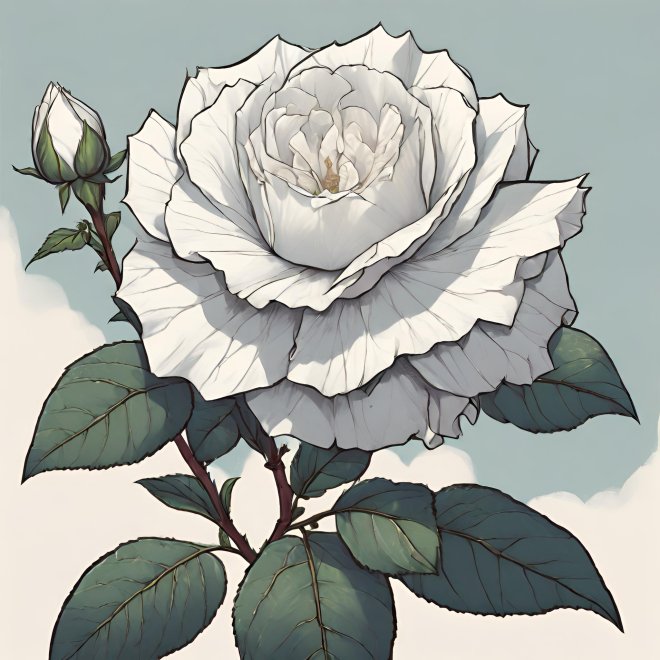
If you’re in the market for a rose that combines elegance, ease of care, and prolific blooming, the Iceberg Rose might just be your perfect match. This classic rose variety is a favorite among gardeners for its stunning white flowers and resilient nature.
The Iceberg Rose, introduced in 1958, is one of the most popular floribunda roses. Renowned for its clusters of pristine white blooms and light, sweet fragrance, it’s a versatile plant that can add a touch of class to any garden. Whether used in borders, hedges, or as a stand-alone feature, the Iceberg Rose is sure to impress with its continuous display of flowers from Spring to Fall.
Soil Requirements
The Iceberg Rose thrives in well-draining soil that is slightly acidic to neutral with a pH range of 6.0 to 6.5. For the best results, enrich your garden soil with organic matter like compost, aged manure, or peat moss. This will improve soil fertility and structure, providing your roses with the nutrients they need to flourish. Good drainage is essential, so if your soil tends to be heavy and clay-like, consider planting in raised beds or improving drainage with organic amendments.
Sun Requirements
The Iceberg Rose loves plenty of sunshine. Plant it in a spot where it can soak up at least six to eight hours of direct sunlight each day. Full sun promotes healthy growth and abundant blooming. In regions with extremely hot climates, a bit of afternoon shade can help protect the delicate white flowers from scorching and keep the plant vibrant.
Watering Needs
Consistent watering is key to keeping your Iceberg Rose happy. Roses generally prefer deep, thorough watering rather than frequent, shallow watering. Aim to water your Iceberg Rose about 1 to 1.5 inches per week, adjusting for rainfall and weather conditions. Water in the morning and focus on the base of the plant to keep the foliage dry, which helps prevent fungal diseases. Ensuring the soil remains evenly moist but not waterlogged is crucial for healthy root development.
Best Plant Hardiness Zones
The Iceberg Rose is quite adaptable and performs well in USDA hardiness zones 5-9. This range allows it to thrive in a variety of climates, from cooler northern regions to warmer southern areas. In zone 5, Winter protection, such as mulching around the base, can help safeguard the plant from harsh cold. In hotter zones, ensuring adequate watering and some afternoon shade can help maintain the plant’s health during the peak of Summer.
Additional Care Tips
To keep your Iceberg Rose looking its best, here are some additional care tips:
- Pruning: Prune your Iceberg Rose in early Spring as new growth begins. Cut back about one-third oof the plant to encourage a bushier form and more prolific blooming. Remove any dead, damaged, or diseased canes to maintain overall plant health.
- Fertilizing: Feed your rose with a balanced, slow-release fertilizer formulated for roses in early Spring and again in midsummer. Follow the instructions on the fertilizer package to provide the right nutrients without over-fertilizing.
- Pest and Disease Control: While Iceberg Roses are generally hardy, they can still attract common rose pests like aphids, spider mites, and Japanese beetles. Regular inspections and early intervention with insecticidal soap or neem oil can help manage minor infestations. Keeping the plant healthy with proper care will also reduce its susceptibility to diseases.
- Mulching: Apply a 2-3-inch layer of mulch around the base of your rose to help retain soil moisture, suppress weeds, and regulate soil temperature. Organic mulches like shredded bark, straw, or compost are excellent choices and also add nutrients to the soil as they decompose.
By following these care tips, your Iceberg Rose will reward you with a stunning display of white blooms that brighten any garden. This classic rose variety is sure to become a cherished feature in your outdoor space, offering beauty and elegance with minimal fuss.


 Previous
Previous

